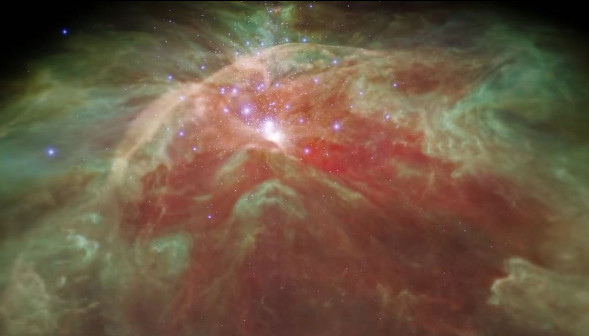
Dubai
Forget Earthly travel.
What if you could explore the stars?
By using the Hubble and Spitzer space telescopes, astronomers and visualisation specialists from Nasa’s Universe of Learning programme have created a three-dimensional, fly-through view of the picturesque Orion Nebula.
They used both visible and infrared light, and two correlated computer models to create the stunning journey. The creators of the video said in a statement that they hope the visualisation would give viewers a better idea of the 3D structure of the star-forming region.
As the camera flies into the nebula, the sequence cross-fades back and forth between visible and infrared views.
On instagram, @nasahubble wrote: “The glowing gaseous landscape has been illuminated and carved by the high-energy radiation and strong stellar winds from the massive hot stars in the central cluster. The glowing gaseous landscape has been illuminated and carved by the high-energy radiation and strong stellar winds from the massive hot stars in the central cluster. The infrared observations generally show cooler temperature gas at a deeper layer of the nebula that extends well beyond the visible image. In addition, the infrared showcases many faint stars that shine primarily at longer wavelengths.”
The fly-through gives viewers the finer details of the celestial landscape. You can see tadpole-shaped proplyds for example. These are protoplanetary discs, which look like modest blobs surrounding baby stars.
Another phenomenon that’s visible in high-resolution is the wispy bow shock – named for the crescent-shaped wave made by a ship as it moves through water – created in space when two streams of gas collide.












